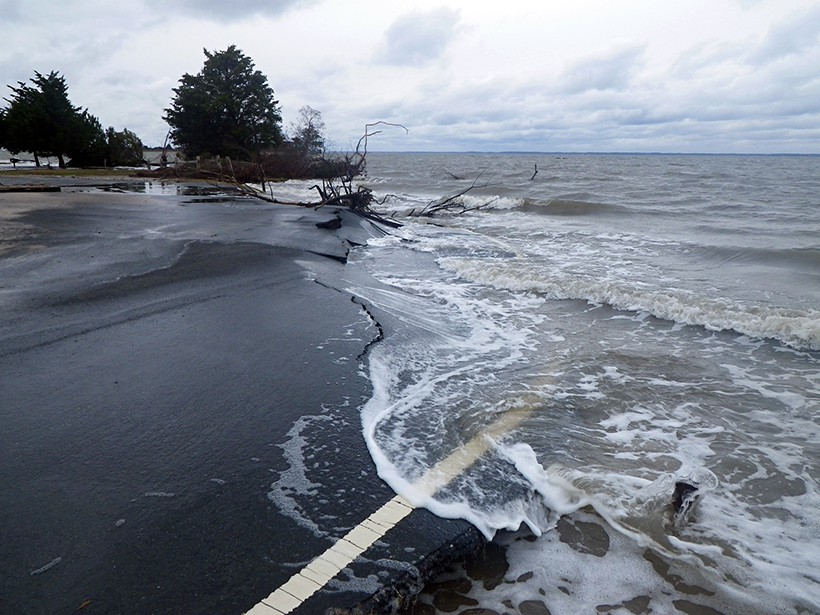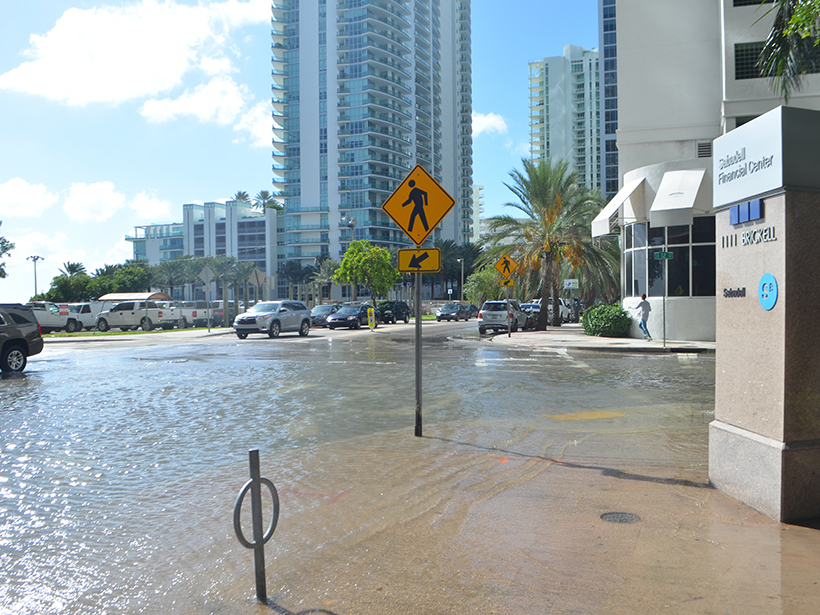International World Climate Research Programme/Intergovernmental Oceanographic Commission (WCRP/IOC) Open Science Conference on Regional Sea Level Rise and Its Impacts; New York, New York, 10–14 July 2017
Climate Change
The Power of Water, Wind, and Solar (and Nothing Else)
Road map for improving climate calls for 100% clean, renewable energy by 2050.
Vetting New Models of Climate Responses to Geoengineering
The Seventh Meeting of the Geoengineering Model Intercomparison Project; Newry, Maine, 26 July 2017
Humans to Blame for Higher Drought Risk in Some Regions
New observations and analysis dispel remaining doubts that anthropogenic climate change is expanding dry areas in northern midlatitudes.
Why Mountainous Upland Forests Emit So Much Methane
New research suggests that moist tree heartwood produces methane and emits the greenhouse gas to the atmosphere.
Kevin E. Trenberth Receives 2017 Roger Revelle Medal
Kevin E. Trenberth was awarded the 2017 Roger Revelle Medal at the American Geophysical Union Fall Meeting Honors Ceremony, held on 13 December 2017 in New Orleans, La. The medal is for “outstanding contributions in atmospheric sciences, atmosphere–ocean coupling, atmosphere–land coupling, biogeochemical cycles, climate or related aspects of the Earth system.”
Should AGU Have Fly-in Meetings Anymore?
Should members of the American Geophysical Union “walk their talk” by cutting carbon emissions related to meeting travel?
Advanced Satellite Tracks Air Pollution in Extraordinary Detail
The unparalleled resolution of the European Space Agency’s Sentinel-5P’s spectrometer will allow scientists to pinpoint pollution sources, the agency reports.
Integrating Water Science and Culture for Urban Sustainability
Workshop on Water and Environmental Global Challenges: International Water Infrastructures and Security; Miami, Florida, 23–25 May 2017
Focus on Climate Solutions, Panelists Say
Time remains to prevent dangerous climate change if people take action now and don’t lose hope, climate experts said.









